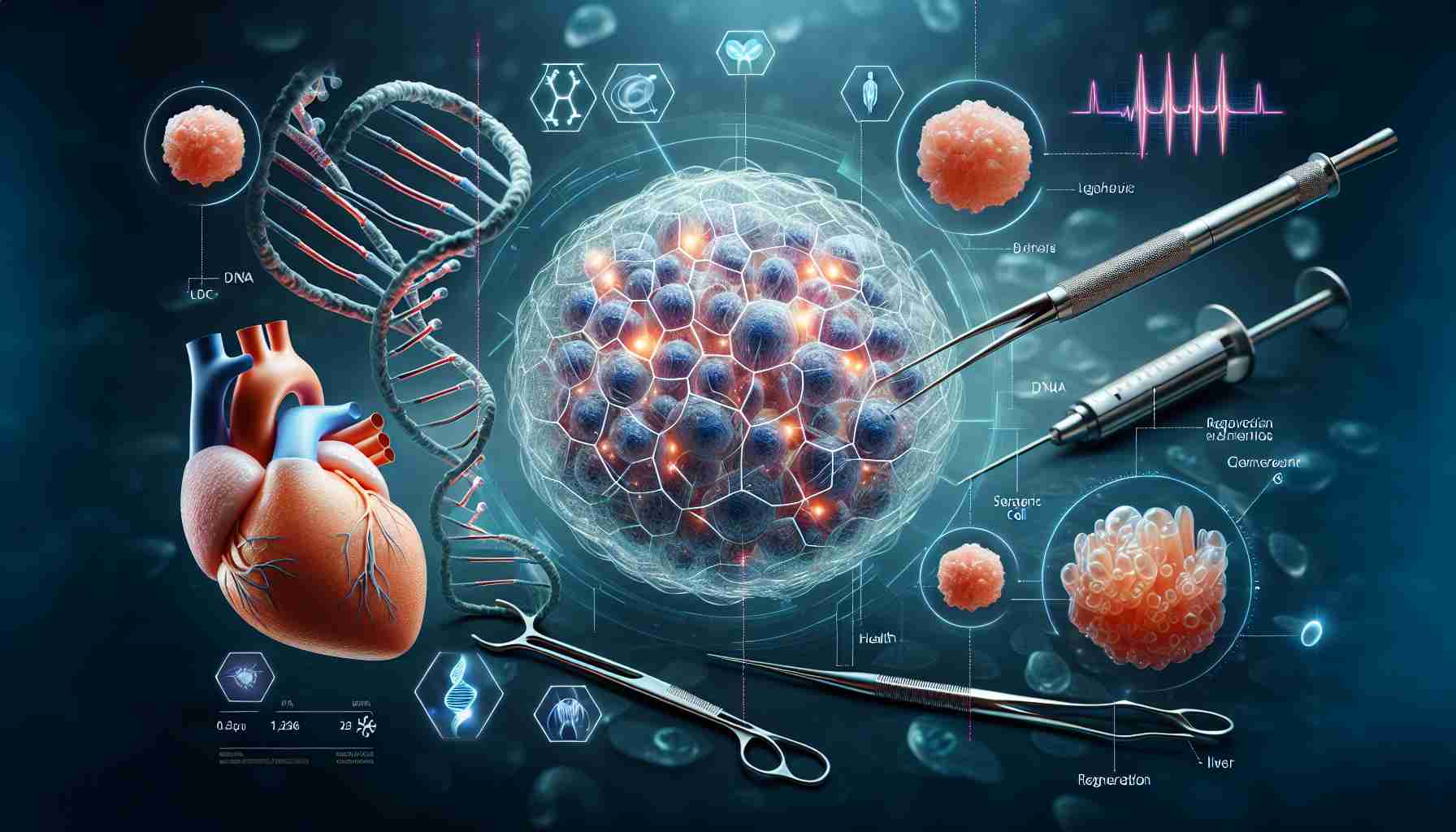Roughly 20 years ago, biologist Caroline Gargett made a groundbreaking discovery while studying tissue removed during hysterectomy surgeries. The cells she found in the endometrium, the lining of the uterus, appeared to be adult stem cells with the potential to regenerate different types of tissues. This finding opened up new possibilities for treating various diseases and conditions.
Traditional methods of obtaining adult stem cells require surgical biopsy or extracting bone marrow, making the discovery of endometrial stem cells particularly exciting. These cells can be collected through a less invasive method, such as a biopsy or even in menstrual blood. Under the right conditions, they can differentiate into a wide range of cell types, including neurons, cartilage, fat, bone, heart, liver, and skin cells.
Another surprising finding was made by separate research teams who discovered that endometrial stem cells can also be found in menstrual blood. This revelation challenged the belief that the body wouldn’t easily discard these valuable stem cells. However, further studies have shown that the upper layer of the endometrium naturally sheds during menstruation, while the basal layer remains intact. This shedding process explains how a subset of endometrial stem cells ends up in menstrual blood.
Dr. Gargett’s team discovered that these special stem cells are present in both the lower and upper layers of the endometrium. They play a crucial role in repairing and regenerating the upper layer that gets shed during menstruation. Additionally, these cells have been linked to endometriosis, a condition that affects millions of women worldwide. The backflow of menstrual blood into the pelvic cavity may cause endometrial-like tissue to grow outside the uterus, leading to pain, scarring, and infertility.
Researchers are now working on developing non-invasive tests to diagnose endometriosis more efficiently. Stem cells collected from the menstrual blood of women with endometriosis have shown distinct differences in shape and gene expression compared to cells from healthy women. This knowledge could potentially lead to faster diagnosis and treatment of the condition.
Furthermore, studies on lab animals suggest that menstrual stem cells have broader applications beyond gynecological diseases. Injecting menstrual stem cells into damaged endometrium in mice has shown promising results in repairing the tissue and improving fertility.
In conclusion, the discovery of endometrial stem cells has opened up new possibilities in regenerative medicine. The ability to collect these cells through less invasive methods and their potential to differentiate into various cell types make them a valuable resource for treating diseases and conditions, including endometriosis. Ongoing research aims to further explore the therapeutic applications of these remarkable stem cells.
FAQ
Q: What did biologist Caroline Gargett discover 20 years ago?
A: Caroline Gargett discovered adult stem cells in the endometrium, the lining of the uterus, with the potential to regenerate different types of tissues.
Q: How are endometrial stem cells obtained?
A: Endometrial stem cells can be obtained through less invasive methods such as surgical biopsy, extracting bone marrow, or collecting them from menstrual blood.
Q: What types of cells can endometrial stem cells differentiate into?
A: Under the right conditions, endometrial stem cells can differentiate into a wide range of cell types, including neurons, cartilage, fat, bone, heart, liver, and skin cells.
Q: Where else can endometrial stem cells be found?
A: Endometrial stem cells can also be found in menstrual blood, which was a surprising discovery.
Q: What is endometriosis?
A: Endometriosis is a condition where endometrial-like tissue grows outside the uterus, causing pain, scarring, and infertility.
Q: How are endometrial stem cells related to endometriosis?
A: Endometrial stem cells play a crucial role in repairing and regenerating the upper layer of the endometrium that gets shed during menstruation, and they have been linked to endometriosis.
Q: What are researchers working on regarding endometriosis?
A: Researchers are working on developing non-invasive tests to diagnose endometriosis more efficiently, using the differences in shape and gene expression of endometrial stem cells collected from the menstrual blood of affected women.
Q: What potential applications do menstrual stem cells have?
A: Studies on lab animals have shown that injecting menstrual stem cells into damaged endometrium can repair the tissue and improve fertility, suggesting broader applications beyond gynecological diseases.
Q: What are the potential uses of endometrial stem cells?
A: The discovery of endometrial stem cells has opened up possibilities in regenerative medicine, with their ability to differentiate into various cell types. They can be used to treat diseases and conditions, including endometriosis.
Definitions:
Endometrium: The lining of the uterus.
Adult stem cells: Stem cells that can differentiate into various cell types.
Biopsy: A medical procedure to obtain a sample of tissue for examination.
Gene expression: The process by which information from a gene is used to create a functional product, such as a protein.
Related links:
National Center for Biotechnology Information
The source of the article is from the blog newyorkpostgazette.com
